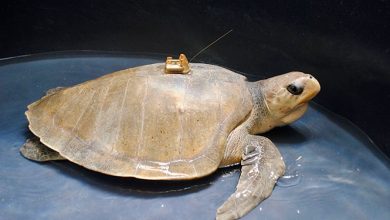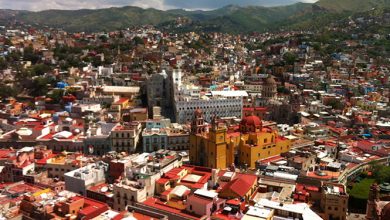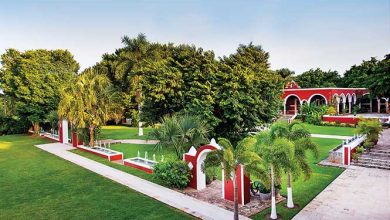Exploring Mexico: Copper Canyon
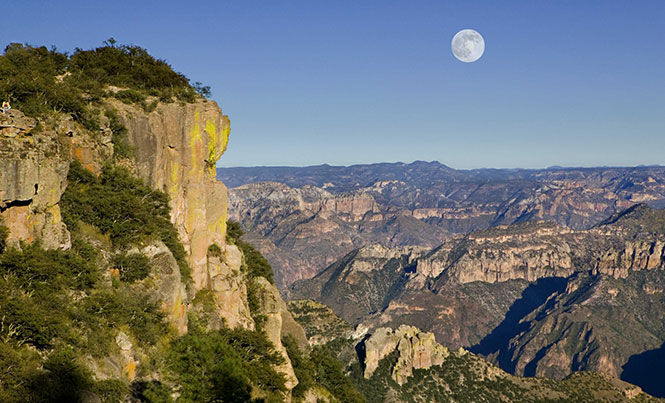
Mexico has some of the most incredibly diverse landscape in the world. In this edition, we leave the flat and humid Caribbean coast for the dry, vertical walls in the state of Chihuahua
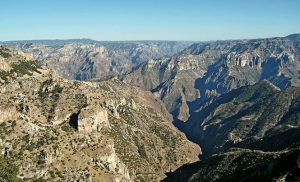 Not only is Mexico’s State of Chihuahua known for its namesake dog breed, but also for the world–renowned Copper Canyon, which is larger and deeper than the Arizona’s Grand Canyon, and features the country’s tallest waterfall, Piedra Volada.
Not only is Mexico’s State of Chihuahua known for its namesake dog breed, but also for the world–renowned Copper Canyon, which is larger and deeper than the Arizona’s Grand Canyon, and features the country’s tallest waterfall, Piedra Volada.
To see this amazing natural wonder of burnished copper-green walls, you can travel through this wonderland of flora and fauna via horseback, train, bike or hiking on a guided or non–guided tour. You can even perform a remarkable feat and duplicate the efforts of the local inhabitants. The Tarahumara (or Raramuri), known for their endurance at running, travel great vertical distances, often running for hours or playing a running game called rarajipari, where a wooden ball is kicked non-stop up the paths of the steep canyons.
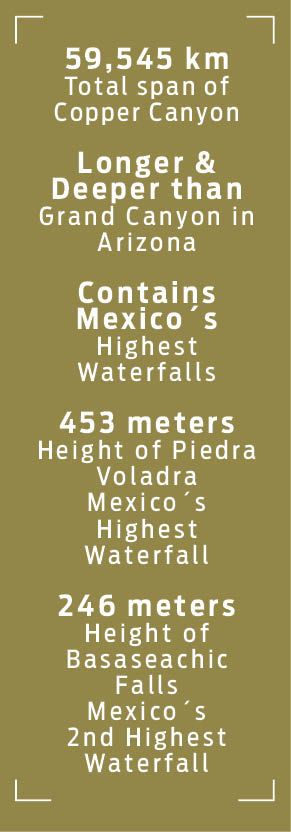 Booking a seat on the Ferrocarril Chihuahua al Pacifico may be a faster and more scenic way to travel, but starting in Chihuahua and ending in Topolobampo, this 418-mile ride will still take approximately 15 hours. Your journey winds through the canyon walls and small towns, where many of the indigenous Tarahumaras showcase their crafts and sell food.
Booking a seat on the Ferrocarril Chihuahua al Pacifico may be a faster and more scenic way to travel, but starting in Chihuahua and ending in Topolobampo, this 418-mile ride will still take approximately 15 hours. Your journey winds through the canyon walls and small towns, where many of the indigenous Tarahumaras showcase their crafts and sell food.
The Copper Canyon is formed by six rivers that merge into the Rio Fuerte and flow into the Gulf of California, and with a more tropical climate at its base, palm and fig trees thrive. As you make your way up this mountainous terrain, the variety of flora will amaze you with the encounter of brushwood, alder and poplar, with pine and over 200 species of oak prevailing above its 4,000 ft. range and in the higher altitudes of 8,000 feet.
Although the Copper Canyon’s annual weather reflects Mexico’s overall temperature ranges, fluctuations of 30 degrees in one day can occur, so be prepared. Consider a hike through the canyon. Doing so July to September might be best. You’ll be surrounded by lush greenery, fewer mosquitos and other than the occasional rains, more comfortable temperatures. If scarlet red, amethyst purple and sunflower yellow are what you want to see, then travel through the canyon at the end of the rainy season, early fall, when starbursts of wildflowers like spider lily, sage or trumpet bush blanket the hills and valley.
For more information, go to www.visitmexico.com/en/copper-canyon
Editor’s Note: If you are a runner and haven’t read Born to Run by Christopher McDougall, I highly recommend it. The Tarahumara are featured prominently in the book and his descriptions of running through the canyon will make you want to strap on your running shoes and head to Copper Canyon.




